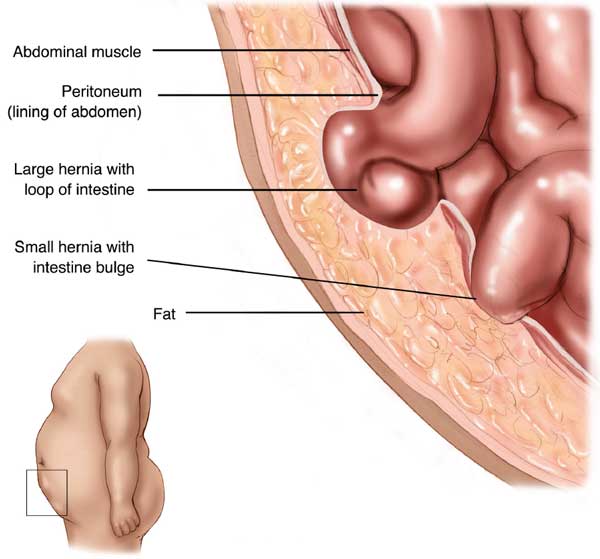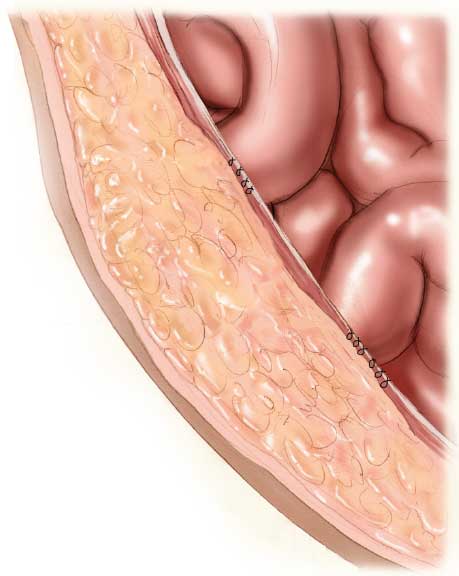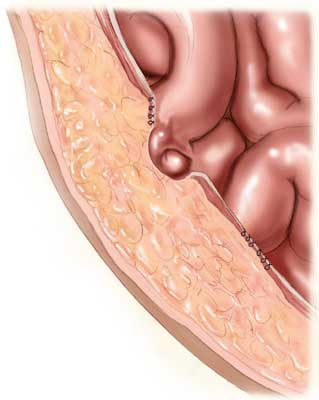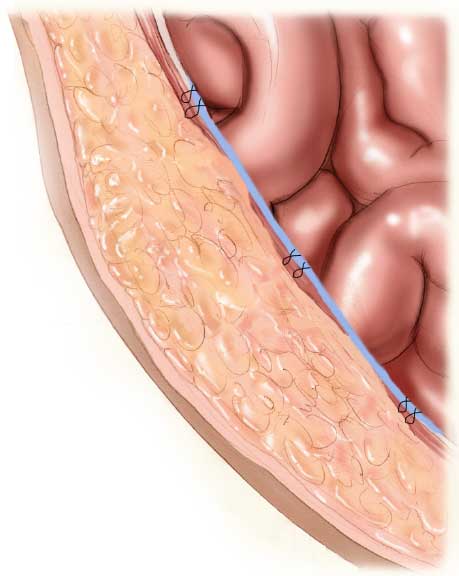Many patients have concerns and ask questions about hernia mesh: “I’ve heard of lawsuits due to mesh” is a common topic which is raised. There is an abundance of negative information online and throughout the patient community on all of the risks and complications that can be associated with the use of hernia mesh.
However, there isn’t clear, easily understood information about the benefits of using mesh in hernia repairs. We hope that by reading the information below, you’ll understand more about why hernias occur, why we choose to use mesh for most of our hernia repairs, the benefits of using hernia mesh, and some of the actual risks of hernia mesh.
How Hernias Form
As discussed elsewhere on our website, hernias are caused by a tear in the muscles of the abdominal wall. Once the muscles tear, fat and internal organs push through the muscles to create a ‘hernia’. However, before the hernia completely develops, there is often a period of prolonged weakening of the muscle over many years. After some amount of time, ultimately the muscle gets to the point of being too weak to support the internal organs, the muscle tears, and a hernia develops. Therefore, it’s important to understand that hernias are not usually just a simple tear in the muscle which is surrounded by normal healthy muscle. There is usually a surrounding area of muscle weakness around the actual hernia. 
Why ‘Primary’ Repair or ‘Tension’ Repair, Doesn’t Work
Over many years and through 100’s of medical studies, surgeons have learned that when the muscles around a hernia are simply sewn back together and closed ‘primarily’ (tension repair), hernias recur at a very high rate. This makes good sense since hernias develop due to a weakening in the muscles all around the area of the hernia. By simply sewing these weakened muscles back together, surgeons basically are just pulling together thin, damaged muscles to repair the hernia. Over time, the muscles continue to weaken, the tear in the muscle returns, and the hernia ‘recurs’.


About Hernia Mesh – Why Mesh is Used
To help reinforce weakened muscles in the area of a hernia, meshes were invented to implant into the surgical site. By implanting a mesh into the area of weakened muscles, the body creates scar tissue which brings strength back to the weak damaged muscles around a hernia. Medical studies have shown that long term recurrence rates of hernias repaired with mesh (tension free) are about 75% LOWER than those hernias repair ‘primarily’ (tension repair). Most studies show a recurrence rate of about 4-20% without mesh, and about 1% with mesh. Thus, 1 out of every 5-20 hernia patients who don’t have mesh used have a recurrence of their hernia. 
The unbiased government agency The National Institutes of Health performed a study of whether mesh should or should not be used for hernia surgery. Read the article by clicking on the logo to the right.
About Hernia Mesh – Risks of Mesh
When mesh was first invented for hernia repairs, the materials used to create the mesh were very stiff, hard pieces of plastic. With time, these pieces of plastic contributed to chronic pain and nerve injury in the groin. These thick pieces of plastic would create a significant amount of scar tissue which also contributed to pain after the surgery.
In the past, some mesh used for non-hernia related surgeries (female pelvic slings) had metal pieces inside of them. These pieces of metal over time eroded out of the mesh and into the intestines. 99.9% of lawsuits today is due to this specific type of metal reinforced meshes and NOT the mesh used for hernia repairs.
Today, these types of hard plastic meshes, and metal containing meshes are not used by most busy hernia surgeons. Thus, patients should separate the ‘risks’ and ‘lawsuits’ due to older types of mesh, and non hernia meshes, from what is used by hernia surgeons today.
Use of Lightweight Hernia Mesh
Over the last couple of years, hernia surgeons who specialize in hernia repair have adopted the newest types of mesh. Although prior hernia mesh was heavy, thick plastic, today’s newest mesh is ultra lightweight. This means that it is soft, and flexible like the muscles themselves. It causes much less scar tissue within the body which decreases the chances of acute and chronic pain after hernia surgery. Over time, the mesh remains soft and flexible minimizing the chances of chronic pain to almost zero.
Our Philosophy
Although some centers feel that they can repair hernias without mesh, the physics behind hernia formation and a large volume of medical studies has shown that mesh repair is strongly preferred. Today, the use of the newest and lightest weight mesh reduces the chances of mesh complications to almost zero.
| Centers Which Don’t Use Mesh | California Hernia Specialists |
|---|---|
| Considered a ‘Tension’ repair because the muscle is pulled together under tension. | Is a ‘Tension Free’ repair because the muscles are not completely closed around the mesh. |
| Over time the muscles around the hernia continue to weaken. | The muscles around the hernia are reinforced by the hernia mesh. |
| Recurrence rates of 20%. | Recurrence rates of less than 2%. |
| Significant pain after surgery due to the tension on the muscles. | Much less pain after surgery because the muscles are not pulled together which causes pain. |
| Requires open hernia repair surgery. | Allows the use of laparoscopic hernia repair when desired. |
Dr. Harris can discuss these items during your consultation to decide which method is best for you. Although basic open surgical hernia repair is still an important option for some patients, every patient should consider being seen by a surgeon who can perform advanced laparoscopic hernia surgery and who uses the newest lightweight mesh. Only a small handful of the hundreds of general surgeons in Orange County, Los Angeles, Riverside and San Diego have the experience to perform hernia surgeries using laparoscopic techniques and use cutting edge lightweight mesh.















